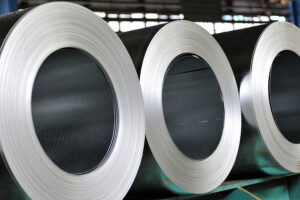
Tariffs are just one dynamic that could affect the construction industry. Here are five ways President Trump’s policy agenda could affect construction and contracting from labor to energy costs.
Labor
The construction industry already faces a labor shortage. Changes to immigration policies could further strain the labor market and impact construction labor costs. The presence of such policies alone could create uncertainty among workers, potentially affecting their decision to show up for work. Due to these changing policies, worker shortages will increase wages. Additionally, the strain on the timing of getting projects completed becomes an issue, as delays caused by labor shortages can extend project timelines and further drive up expenses.
Tariffs
The bottom line is tariffs will significantly impact the construction industry. New tariffs could increase the cost of building materials, as well as goods throughout the construction supply chain. Trump has instituted a 25percent tariff on steel and aluminum imports which went into effect on Wednesday, March 12. Following his order to impose reciprocal tariffs, intense negotiations with trading partners are expected.
Tariffs could lead to higher costs for raw materials like steel, aluminum, and copper. This directly impacts construction project budgets and supply chains, with the effects likely becoming visible in the next six to nine months.
It is possible, in the short term, that there could be a run on raw materials if a significant number of builders and developers try to stock up on these materials. We may also see contractors renegotiating contracts or delaying project starts. The good news is that there is a supply of raw materials out there. If builders have already broken ground and their project has already started, they are less likely to be impacted. For construction projects that are further out, the impacts could be felt. The impacts are disruptive, affecting both the builder and end-users. While it can be hard to know what amount some tariffs will ultimately be, contractors putting bids together should begin working with suppliers to factor in potential price increases.
A major challenge for contractors is how to maintain project momentum and stay within budget, especially as domestic raw materials become more expensive. While switching suppliers is an option, procurement delays and the long process of negotiating and implementing change orders could create roadblocks. Contractors must ensure materials meet their standards and arrive on time to avoid project delays. Those who thrive in this environment will be skilled in estimating and have solid relationships with suppliers. Universal or reciprocal tariffs could also affect other building-related imports, such as carpeting, electrical outlets, security equipment, furniture, tools, etc.
Trump’s implementation of tariffs could also increase the cost of raw materials imported from countries like Canada, Mexico, and Turkey, which may lead to higher construction costs.
Industry deregulation
Under Trump’s policies, contractors may see reduced regulations, streamlined permitting processes, and fewer Occupational Safety and Health Administration (OSHA) and environmental regulations. While this could speed up project timelines, there are risks as well. Contractors must still prioritize safety, even with potentially relaxed regulations.
Energy costs
Trump’s emphasis on domestic energy production could lower the cost of oil and gas. However, reducing incentives for green energy investments may discourage growth in the sector. With the expansion of data centers and other energy-heavy industries, power needs will benefit from a balance of domestic oil and gas, as well as green energy sources like wind and solar.
Public-private partnerships
Public-private partnerships (PPPs) were significant during Trump’s first term and will likely continue to be a focus. These partnerships are ideal for large-scale infrastructure projects, such as roads, bridges, and power plants, which are costly and require private sector involvement.
As President Trump’s policies take shape, the construction industry will face several variables, such as labor shortages, tariffs, raw material costs, deregulation, energy changes, and public-private partnerships. Contractors will need to stay prepared for whatever comes their way.
Brian Kassalen is a principal with Baker Tilly and the firm’s construction industry leader.





